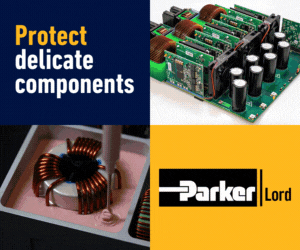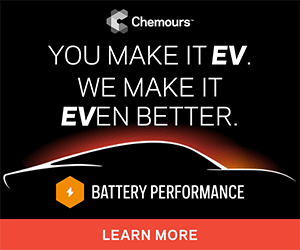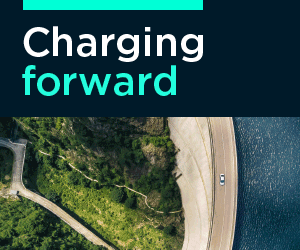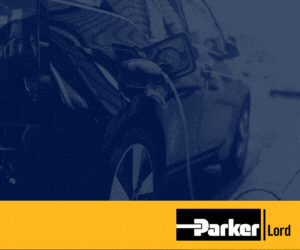Wireless Charging
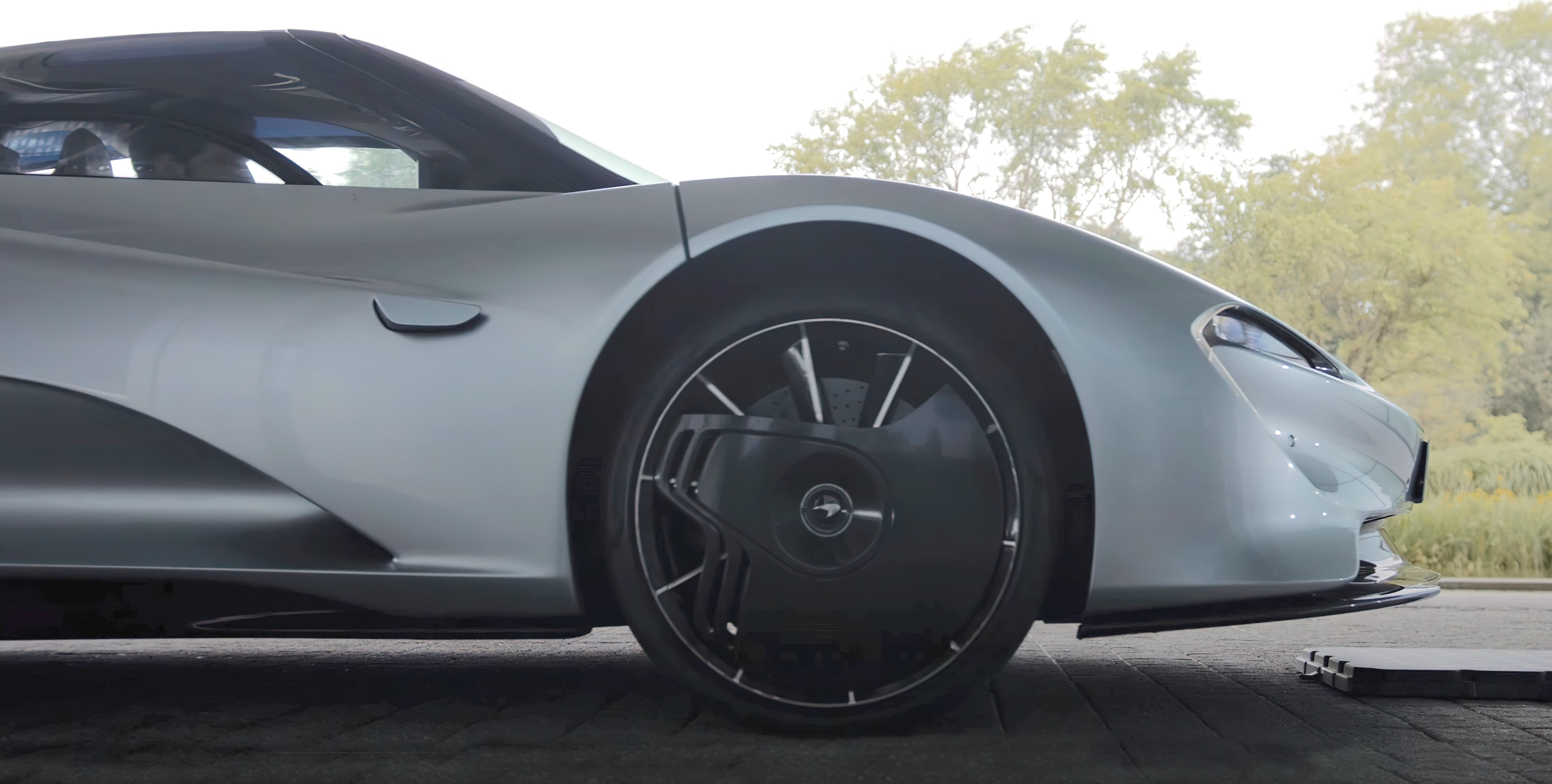
(Courtesy of McLaren Automotive)
Ready to roll
With agreement on an SAE standard for wireless charging systems set to herald their wider roll-out, Nick Flaherty reports on developments in the technology.
The technology for wireless charging of e-mobility systems has reached a critical point. With the SAE J2954 standard now agreed for consumer EVs, the technology has the potential for widespread adoption.
The standard focuses on relatively low-power charging systems, at 3.3 kW through to 11 kW. This is aimed at static charging of cars at home or the office, or light trucks that charge overnight at their depot.
However, installing a wireless charging system is an additional cost for the vehicle design, as a cable connector is already a prerequisite. Installing wireless charging pads embedded in roads also brings an additional cost, as it includes a connection to the grid.
As a result, the standard is optimised for single-phase home power systems, where connection to the grid is affordable. The three-phase connections required for higher power are much more costly.
There is still a requirement though for more powerful charging systems for opportunity charging, to top up a vehicle’s batteries when it stops briefly. Such systems, for buses, trucks or boats, can double the useable lifetime of a battery pack through the day. Multiple charging coils can be combined on a bus to increase the power transfer in a quick burst.
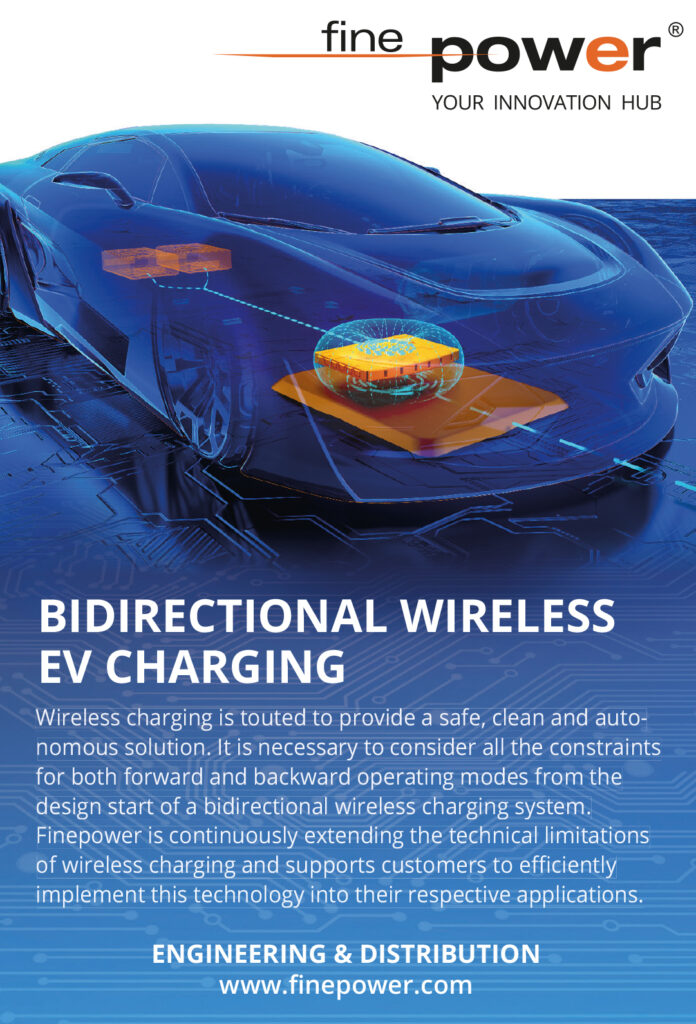
Then there is dynamic charging, which provides power to vehicles during operation. This can be achieved using a series of static charging systems, for example with a taxi rank where the cars charge while stationary before moving to the charging point.
Then there is dynamic charging, which provides power to vehicles during operation. This can be achieved using a series of static charging systems, for example with a taxi rank where the cars charge while stationary before moving to the charging point.
That can allow vehicles to have smaller battery packs, as power is delivered from the road, but it requires significant updates to road infrastructures, and trials around the world are demonstrating how such a system would work.
Charging technology
The basic technology for wireless charging is relatively simple. Feeding AC to a transmitter coil on the ground to wirelessly couple to a receiver coil to transfer power was developed by Nikola Tesla more than 100 years ago.
The design of the coils is also important in the engineering trade-off between the distance between them and the efficiency of the power transfer. The closer together they are, the tighter the inductive coupling and the higher the efficiency. However, this is a challenge for e-mobility designs where the distance can vary, for example from a sportscar to an SUV, a light commercial truck or a bus, all with different heights above the ground.
Some developers have devised techniques to raise the lower pad to reduce this distance, but that introduces installation and mechanical challenges, particularly for a coil embedded in the road. This approach also needs more complex adaptive control of the frequency and power through the coil as the separation distance changes.
The frequency of the AC creates the magnetic field for the coupling of the coils. Monitoring the power through the receiver and feeding back to the transmitter via a comms link allows the optimum efficiency for the power transfer, known as the Q factor.
This comms link can be via wi-fi, Bluetooth or a proprietary scheme. With consumer electric cars, this needs to be linked into a car’s system, so wi-fi is the main technology used, although aftermarket systems are looking at a Bluetooth link to a mobile phone to provide the comms. For other wireless charging systems for trucks or buses that are dedicated to a particular system, other wireless comms links can be used.

However, most of the patents for these wireless charging systems are based on the safety of the system and the comms link between the coils. The key area for safety for wireless charging is foreign object detection (FOD).
With large amounts of energy passing between the coils, a metal object such as a coin or a can on the charging pad can heat up and cause problems, for example melting the pad and damaging the coil.
FOD can be achieved in a number of ways. For example, capacitive sensors in the pad can be used to monitor the performance of the coils. A metal object on the pad changes the capacitance, allowing its presence to be detected.
That does not necessarily detect organic objects, such as an animal on the pad in a garage, though. Optical sensors around the edge of the plate using infrared LEDs and photodiode detectors or even Lidar can be used to detect both metal and organic objects on the pad and switch off the charging process if an obstruction is detected.
The SAE standard
A key step for the development of wireless charging systems was the publication in 2020 of a standard for wireless charging. J2954 defines a unidirectional wireless charging system of up to 11 kW at a frequency range of 81.39-90 kHz.
Three power levels are defined – 3.7 kW for WPT1, 7 kW for WPT2 and 11 kW for WPT3. With a maximum separation between the coils of 250 mm, the grid-to-battery efficiency is expected to be up to 94%, although the standard defines three vertical distances, or Z values, from 100 to 250 mm.
The standard also defines the acceptable tolerance for aligning the ground coil and the vehicle coil in the lateral x and y directions when the vehicle is driven over the ground pad. This ranges from ±75 mm in the direction of travel and ±100 mm in the lateral direction.
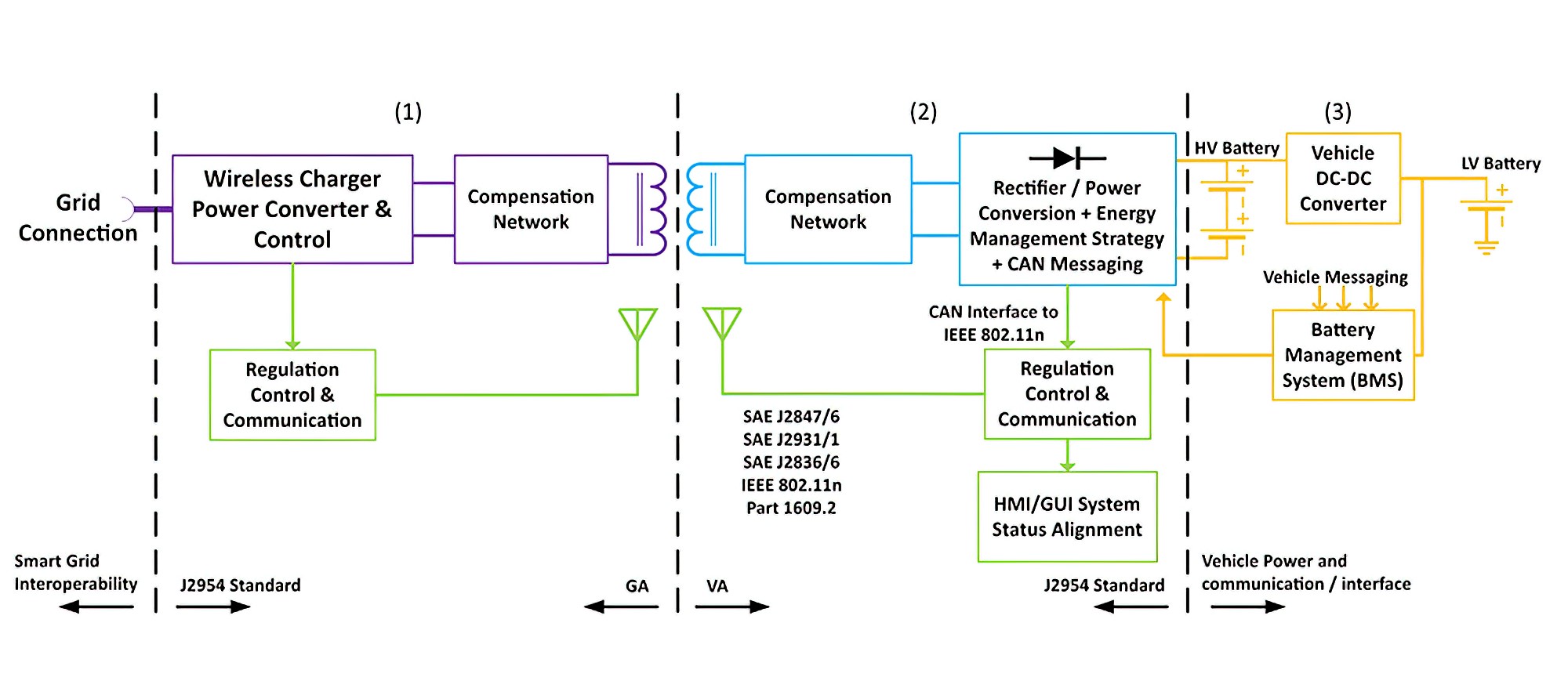
(Courtesy of SAE)
The standard also includes message protocol specification for the comms links. J2847/6 uses work by the SAE J2954 Alignment and Controls Sub-Team in the Wireless Power Transfer and Alignment Task Force, adding a message set based on the JSON message definition using IEEE 802.11n wi-fi hardware.
J2954 was originally developed to test wireless energy transfer interoperability between unmatched ground assembly (GA) and vehicle assembly (VA) systems – that is, components made by different companies. It adds more message definitions to indicate that proper coil alignment has been achieved, initialise the subsystems for wireless charging, ramp up to full power, perform active wireless power transfer, and terminate the charging session.
“Our technology works over a wide power range, from light-duty L2 charging 7-11 kW up to 50, 75 kW and above,” says Morris Kessler, chief technology officer at technology supplier Witricity.
“Our initial focus is L2 at 7-11 kW, and that’s what the SAE standard says. The standard is based largely on our technology, and we will comply with the standard – it avoids proprietary solutions so you can have multiple vehicles charging from one pad.”
Rather than building its own pads, Witricity is licensing the technology. The first commercial implementation was a 3 kW system in a 530e BMW in 2018, with the technology also installed in a limited edition Mclaren Speedtail supercar in 2020.
“We have licensed our technology to T1 and infrastructure suppliers to create standards-compliant solutions and reference designs,” Kessler says.
“The first mainstream implementations will be in Asia this year, by a large Korean car maker and two Chinabased car makers, and over the next one to four years there’ll be a number more,” he says. “The publication of the standard was a very important catalyst, but it’s important to have reference systems to test against. Those have a different set of reference electronics with different comms standards and control systems.”
The 11 kW power level is based on the grid power available to most homes and workplaces. The SAE also has a working group called WPT4 that is developing a 22 kW version, but work on that has been postponed as it was not ready for the first version, says Kessler.
“We have been working on FOD technology for a number of years,” he adds. “Our system detects metallic objects fast enough to avoid any hazards. For a street-based system, an object such as a coin on the pad might be hot; it’s important that doesn’t happen, so opportunity charging will probably require FOD. In a depot it is a more controlled environment, and even if there is a coin on the pad it won’t damage the ground coil or the vehicle.
“We have an array of sensors in the ground pad that are essentially metal detectors. They operate across the GA surface and are sized to detect objects as small as a paperclip. You have to isolate this sensing from the power transfer field, and we have ways of doing that.”
Frequency range
However, there is some reluctance to adopt the 85 kHz coupling frequency. “We will not change our system to meet the latest SAE systems,” says Richard van den Dool, CEO of Inductive Power Transfer (IPT), which has been developing wireless charging for automated ground systems.
It bought the Primove wireless charging business from Bombardier earlier this year, expanding the range of technologies it can use. “We have different concepts: some fall 100% into the SAE standard, some 100% outside,” van den Dool adds.
“We strongly believe that the SAE standards are not the final ones – this is also backed up by some of the market players and car makers. The standards need to be developed further to be truly optimised, and that is something we are working on with a revision 2 to see if we can work with rev 3 to make the technology more producible and workable.
“The IPT and Primove technologies can be built into SAE, and we have a proven installed base. The standards need to be developed such that the products are manufacturable. Being driven by one company based on a patent licence model does not make products out of it; it’s very much about the coil design and the choices made there.”
Van den Dool also points to limits with dynamic charging. “Dynamic charging will be extremely expensive with those standards,” he says.
Kessler says, “That is the result of years of work on the standards to survey which frequencies are critical worldwide and what might be available, and that was decided among a wide group of people.
“The 79-90 kHz band was open and available for use globally. We’ve built systems in the past at other frequencies but this choice was a compromise for global compatibility,” he says.
“Initially we were working at a frequency of 150 kHz, so the trade-off is as you go up in frequency, the coils can be lower loss but the electronics have a little more loss; as you go down, the electronics are more efficient but the coil losses increase. That means there’s a nice balance between the electronics and high-efficiency coils [at 85 kHz].”
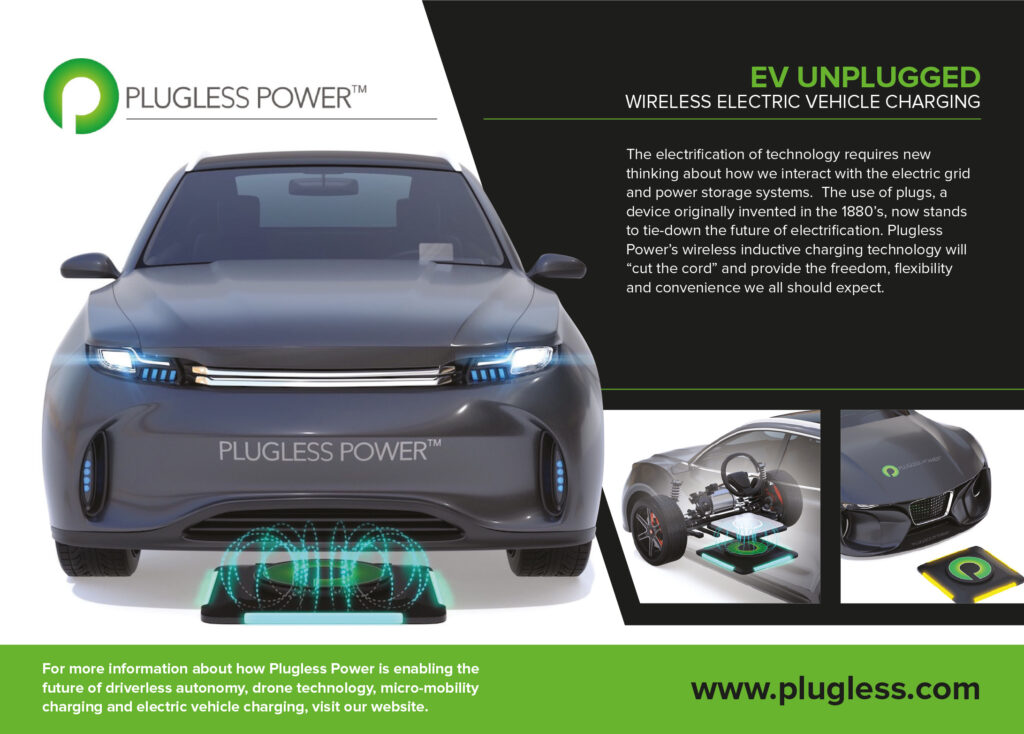
Manufacturability
Manufacturability of the wireless charging systems is also a focus for Plugless Power, which makes wireless EV charging stations.
“There has been this phase change,” says its CEO Michael Anderson.
“Wireless gives you an entire connection, directly syncing with a cell phone, a link to the car and everything else. The concept of never having to go to a fuelling station and never having to plug the vehicle in is the ultimate convenience. The SAE standard was key here – there had to be an individual standard,” he says.
The integration into a vehicle as an aftermarket addition is the next step. “We are asking car makers for an SAE compatible plug alongside the charger to enable a coil to be fitted to allow an aftermarket charger,” Anderson says. “Our pads will have Bluetooth to connect to a cell phone, bypassing the hardwired charger. In the future we would love to have full integrated comms with the car.”
The Plugless technology was developed by Evatran, which was bought by a consortium of investors at the end of 2020 and renamed. The patents are based around FOD sensing, comms and some of the power management systems related to heat management, says Anderson. Tackling the thermal issues gives a 92-94% end-to-end efficiency, he says.
The company is also looking at using Lidar imaging to map the underside of a vehicle as it moves over the charging pad to automatically register the type of vehicle and modulate the power accordingly to provide a higher level of charging to a system that could support it. The Lidar would also be used for FoD and additional applications such as surveillance and security.

The company has developed a 3.3 kW pad for the car that is 1.5 in thick with housing and with a 15 x 15 in receiver coil. It weighs 17 lb (7.7 kg), mainly from the copper for the coils and the cooling. “Our goal is to keep the whole package under 20 lb; there’s no material impact on vehicle efficiency,” says Anderson.
The transmitter pad is 3 in thick and measures 24 x 24 in to include the sensors for alignment and the power management circuits.
A second-generation system is targeting an 8.6 kW unit at the end of this year, with a third generation planned at 11.2 kW for the SAE standard for the middle of 2022.
“We are debating whether to go with the SAE standard or buck the system,” Anderson says. “The problem is that there is a general sentiment that one company had too much of a hand in the standard.”
The Plugless strategy is based around the capabilities of the home. “The higher the power output, the larger the transformer required in the home,” he says. “We believe it is quite possible to get to 50 kW for home applications, and we see that in the near future, but once you get past that there are the economics to consider. Consumers are probably willing to pay an extra 5-10% for wireless charging but the more powerful systems will be three to four times higher in price.
Like Plugless Power, IPT is looking at the way the systems are used. “Our objective is to have an interoperable pick-up for home and work,” says van den Dool. “We are targeting the home market and the second car in the household, the city shopper with a 24 kW battery for example where you charge the battery once a week.
“We chose 3.6 kW for a charger, as every household has a 3 kW standard plug with a single-phase supply. A 7.2 or 11 kW charger needs a three-phase connection, and you have to pay extra for that,” he says.
More powerful systems
IPT started out by delivering wireless power to industrial robotic systems such as baggage trolleys, so that batteries would not be needed. It implemented its first e-mobility system in 1998, and has been developing high-power systems for static charging of buses.
It has systems in Genoa and Turin in Italy, Madrid in Spain and Braunschweig in Germany. It supplies the wireless charging system for a bus route in London and is part of the OSRIC project in London to install wireless charging on streets in the city. It is now looking at maritime systems to charge electric boats when they dock.
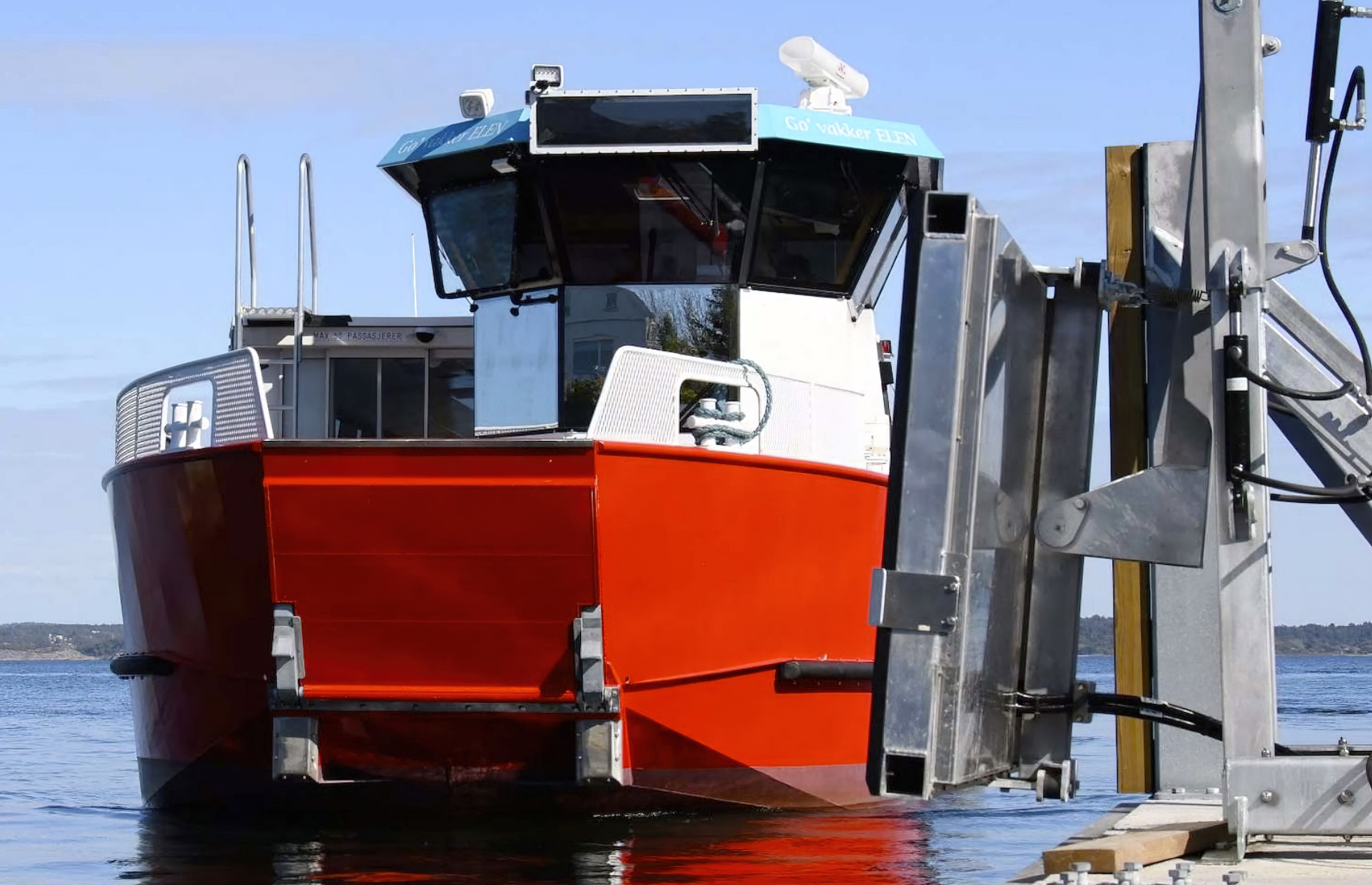
(Courtesy of IPT)
“The advanced technologies are in the positioning system and FOD,” says van den Dool. “This was developed with metal detection specialists, and tuned for a pad with a system to recognise tiny differences in the metal as well as learning about the vehicle’s environment. For example, the metal in the vehicle and the field detection can create noise, which makes the assembly a challenge.”
“We have different coil concepts,” he says. “For example, the coil design is different for the 100 kW IPT system and the 200 kW Primove system. The IPT system uses a round coil design with a single phase while Primove uses three phase charging through a single coil. The sinusoidal current uses the three phases to provide a consistent magnetic field at 20 kHz.”
“We target the distance and maintain this for maximum efficiency, so we have a ‘Z mover’ to change the height,” he says. This rises up by 25 cm to reduce the gap to 1 cm for maximum efficiency. This also helps to reduce the EMI from the coils.
The Z mover has its own safety issues. “We use a pinch protection mechanism from a window lifter in a car, and we can operate down to -25 C and with a snow load of 3 kg,” says van den Dool.
The coil on the Z mover is a double-D shape and gives a tolerance in the pickup of ±10 cm in both lateral directions. It communicates via Bluetooth to the satellite navigation system in the vehicle that details the correct position. The satnav them communicates with the vehicle chargers via the CAN bus.
“Our design covers the standards to 2018, but we are rebuilding the development team around it to align with the SAE standards,” says van den Dool.
“We have a platform for light-duty vehicles at 3.6, 7.2, 11 and 22 kW, and most likely with 44 kW. The 44 kW system is under evaluation as we need to see what the demand is. Our heavy duty platform starts at 88 kW, so that would perhaps be better.”
Other bus systems use multiple coils on the bus to provide higher power delivery.
Momentum Dynamics for example has developed a system for opportunity charging where a bus is charged for 7-10 minutes every hour while stationary. It can be used for up to 16 hours a day, maintaining 75% state of charge and nearly doubles the usable power from a bus’s battery pack.
The system is a modular design, consisting of four charging pads connected in parallel on the vehicle, with each pad capable of delivering 50 kW of power to the battery.
The ground side of the system is ruggedised and installed in the roadway. The charging electronics cabinet is located near a bus stop, and the first system has been installed at a stop at Columbia Station in Wenatchee, Washington state, where multiple transit vehicles arrive each hour.
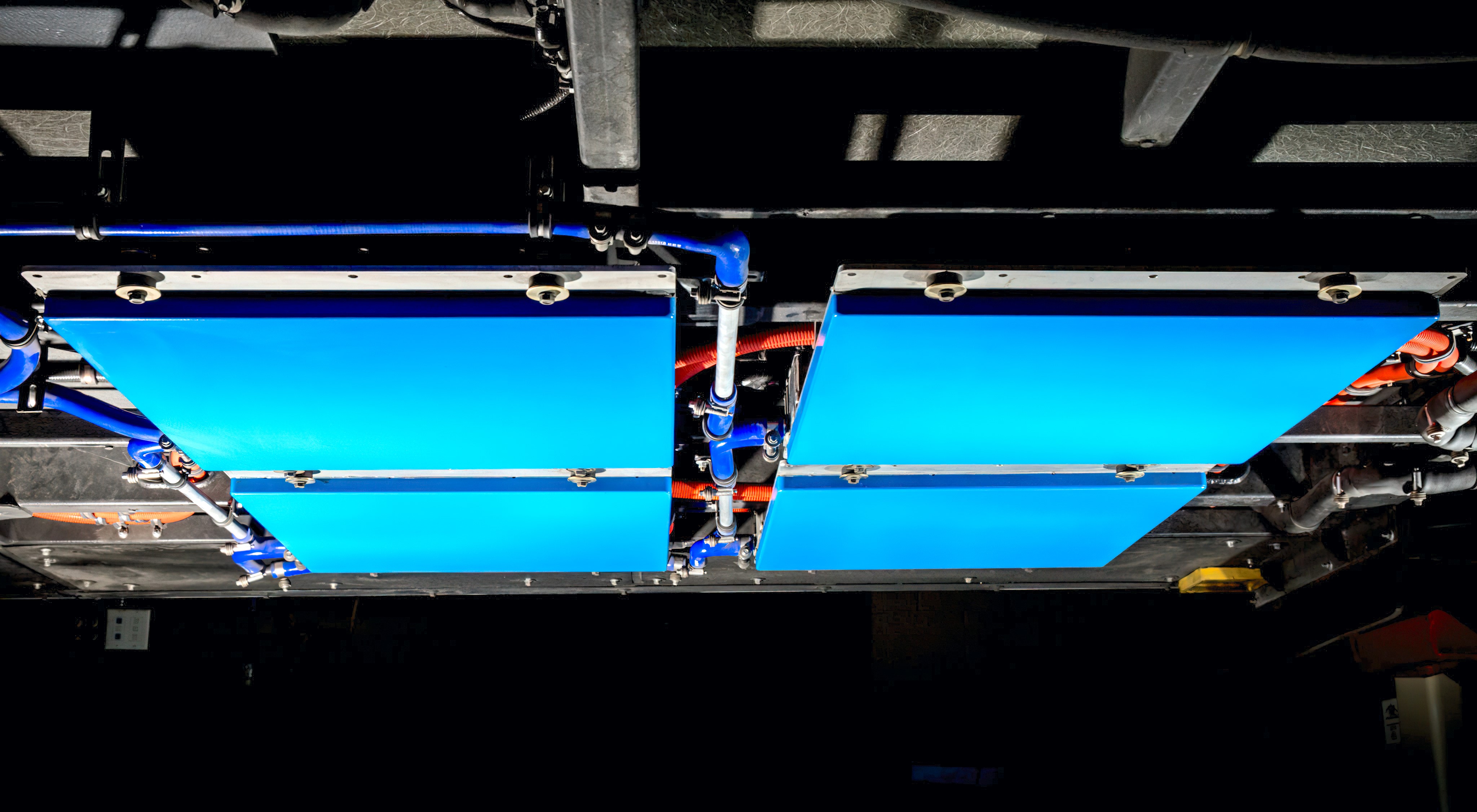
(Courtesy of Momentum Dynamics)
Dynamic charging
The challenge for wireless charging is extending the static charging capability to moving systems. The coil developed by Primove and IPT is less a coil than it is a cable. It can be 20 m long and installed every 40 m, added to the concrete when a road is being built.
The system essentially has two rails in the concrete, designed to avoid the EMI between the cables and to reinforce the sinusoidal feed that provides the charging. “This is the most appropriate for dynamic charging, as you don’t need a massive coil,” says IPT’s business development manager Dr Sergio Perez. “We achieved 160 kW at 60 kph in trials in Belgium with a Bombardier proof of concept.”
The cables are 100 mm thick and can deliver 250 kW of power to multiple vehicles. “We did some tests with the cables, and found that as long as they have the same frequency the vehicles can share the power,” says Dr Perez. “We also used the static coil in the Braunschweig bus project and tested it with a VW Golf with a standard inductive system.”
The system is now being extended to marine applications. “We are using the same coils from IPT for electric passenger ferries aligned on a pontoon,” says Dr Perez. “This is in a fjord in Norway, so there is limited movement of the water, and it gives 2.8 kWh of top-up charging.”
These wireless charging roads are not future technology. Sweden has commissioned the world’s first smart road that can charge an electric truck as well as a bus inductively while in full motion.
The Smart Road in Gotland uses technology from Electreon for dynamic wireless mobile power transfer. The coils are deployed 8 cm under the surface and activated only when a corresponding vehicle such as a truck or a bus drives on top of it.
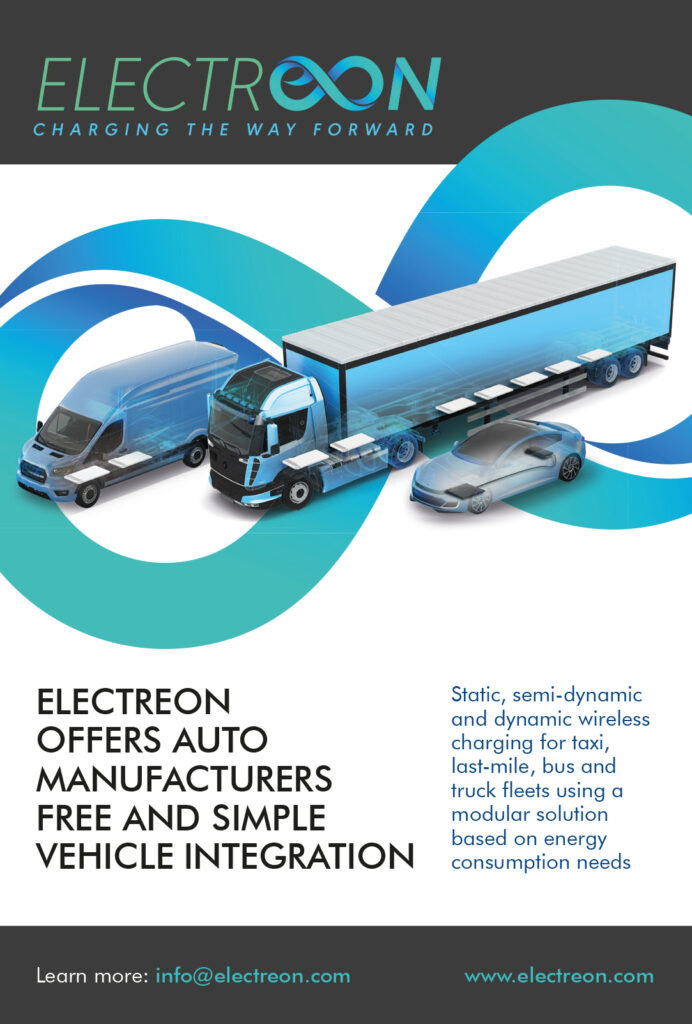
The 1.6 km road is part of a 4.1 km route between the local airport and the city centre of Visby on the island of Gotland in the Baltic Sea, and installation was completed at the end of January this year. An electric truck is used to test the operation of the road in different weathers to ensure the system is ready for large-scale roll-out.
The consortium developing the road includes EiTech, a Swedish subsidiary of Vinci, one of the world’s biggest infrastructure and construction companies, and the Swedish Rise Research Institute. It also includes Dan Bus Company, which is based in Israel. The coils for the smart road are manufactured by French company Hutchinson.
The consortium developing the road includes EiTech, a Swedish subsidiary of Vinci, one of the world’s biggest infrastructure and construction companies, and the Swedish Rise Research Institute. It also includes Dan Bus Company, which is based in Israel. The coils for the smart road are manufactured by French company Hutchinson.
Conclusion
Despite the disagreements over the definition of the technology, the roll out of wireless charging for e-mobility systems has reached a tipping point. The SAE standard is a key step in giving vehicle makers confidence to install the technology. That is driving down the cost of the equipment and creating an ecosystem of wireless charging technology that is expanding for more powerful trucks, buses and marine systems.
Developments will remain split between a focus on low-cost 3.6 kW chargers for consumer convenience and the more powerful equipment for opportunity charging. Dynamic charging with specialised roads will follow for specific applications, with shuttles as an early opportunity.
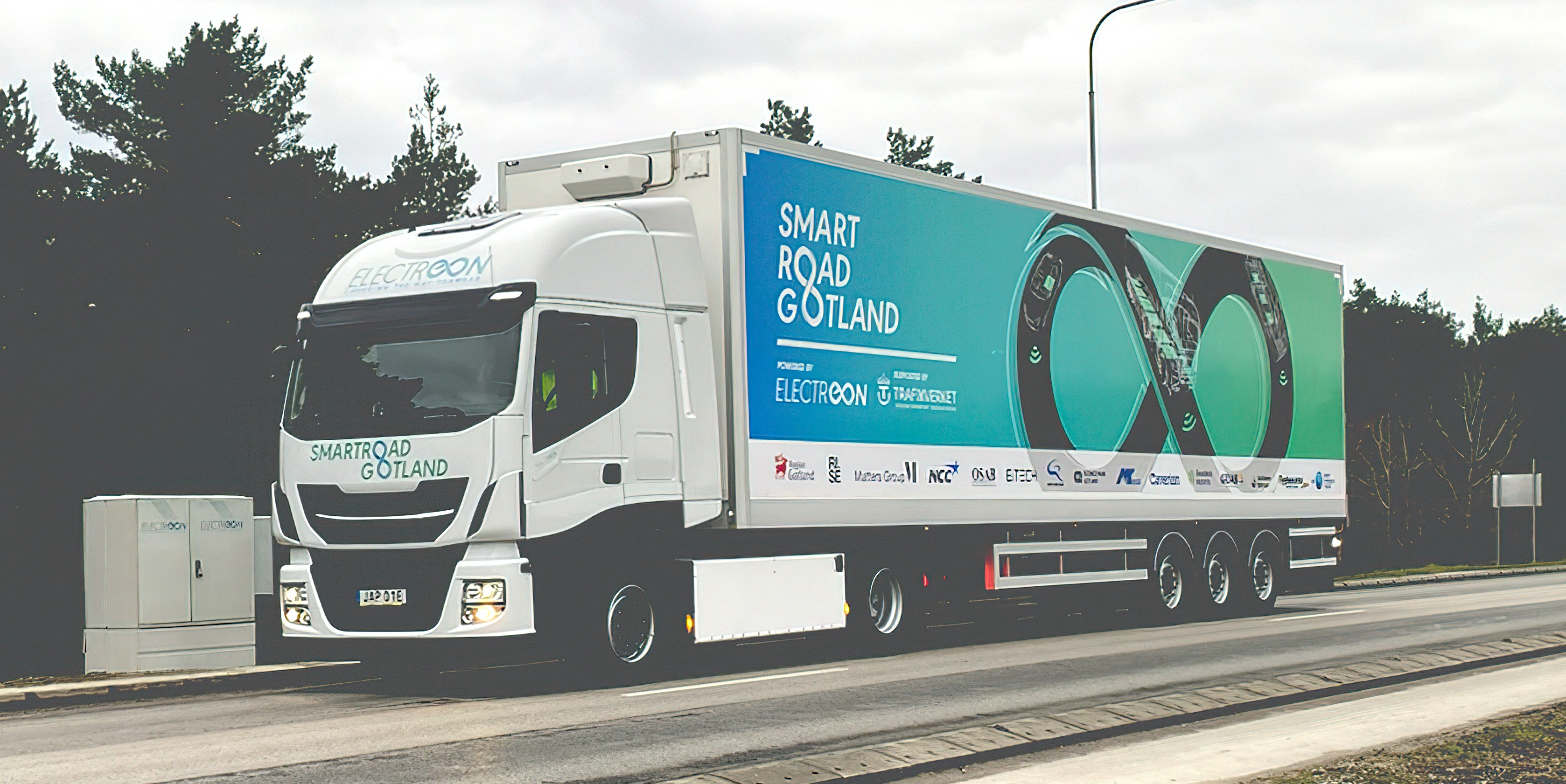
(Courtesy of Electreon)
ONLINE PARTNERS




















